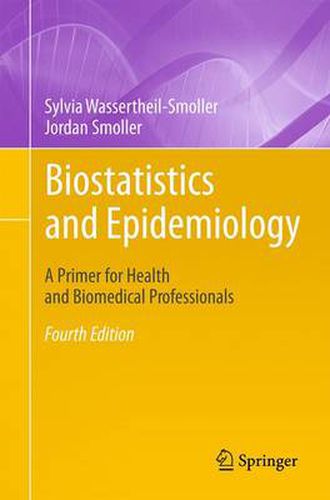Readings Newsletter
Become a Readings Member to make your shopping experience even easier.
Sign in or sign up for free!
You’re not far away from qualifying for FREE standard shipping within Australia
You’ve qualified for FREE standard shipping within Australia
The cart is loading…






Since the publication of the first edition, Biostatistics and Epidemiology has attracted loyal readers from across specialty areas in the biomedical community. Not only does this textbook teach foundations of epidemiological design and statistical methods, but it also includes topics applicable to new areas of research. Areas covered in the fourth edition include a new chapter on risk prediction, risk reclassification and evaluation of biomarkers, new material on propensity analyses, and a vastly expanded chapter on genetic epidemiology, which is particularly relevant to those who wish to understand the epidemiological and statistical aspects of scientific articles in this rapidly advancing field. Biostatistics and Epidemiology was written to be accessible for readers without backgrounds in mathematics. It provides clear explanations of underlying principles, as well as practical guidelines of how to do it and how to interpret it. Key features include a philosophical and logical explanation at the beginning of the book, subsections that can stand alone or serve as reference, cross-referencing, recommended reading, and appendices covering sample calculations for various statistics in the text.
$9.00 standard shipping within Australia
FREE standard shipping within Australia for orders over $100.00
Express & International shipping calculated at checkout
Since the publication of the first edition, Biostatistics and Epidemiology has attracted loyal readers from across specialty areas in the biomedical community. Not only does this textbook teach foundations of epidemiological design and statistical methods, but it also includes topics applicable to new areas of research. Areas covered in the fourth edition include a new chapter on risk prediction, risk reclassification and evaluation of biomarkers, new material on propensity analyses, and a vastly expanded chapter on genetic epidemiology, which is particularly relevant to those who wish to understand the epidemiological and statistical aspects of scientific articles in this rapidly advancing field. Biostatistics and Epidemiology was written to be accessible for readers without backgrounds in mathematics. It provides clear explanations of underlying principles, as well as practical guidelines of how to do it and how to interpret it. Key features include a philosophical and logical explanation at the beginning of the book, subsections that can stand alone or serve as reference, cross-referencing, recommended reading, and appendices covering sample calculations for various statistics in the text.